- The main difference between PRINCE2 and Agile is that PRINCE2 is a project management methodology, whereas Agile is a set of guidelines and principles around which frameworks like Scrum, XP and Kanban are built.
- Agile frameworks are incredibly flexible and allow teams to adapt to changing business demands, markets and customer requests.
- PRINCE2 is a highly structured, rigid approach to project management that follows well-planned timelines and goals, making it difficult to pivot during projects.
Facts & Expert Analysis About the Differences Between PRINCE2 and Agile:
- The rise of Agile: The Agile Alliance — a team of software developers tired of rigid project management methodologies — helped give rise to project management techniques such as Scrum, Kanban and XP via their list of Agile guidelines.
- Emerging technologies: The PRINCE method, which later became PRINCE2, was born in 1989 after a U.K. government agency saw the need for a project management methodology that could help government agencies implement emerging technologies.
- Documents vs working software: One of the biggest differences between the two project management approaches is that PRINCE2 favors using data in documents to communicate to stakeholders and clients how a project is progressing, while Agile favors frequent face-to-face meetings to demo products and discuss project progress.
Agile and PRINCE2 (Projects IN Controlled Environments) are two popular project management approaches with many pros and cons, making it challenging to decide between them when starting work on a project. If you’re a project manager who wants to learn more about these methods and how they can help you, our PRINCE2 vs Agile guide is for you.
Below, we’ll explain what PRINCE2 and Agile are, what types of projects each one is suitable for, and how these project management approaches differ. We’ll also clue you in on how to obtain Agile and PRINCE2 certifications. We know you’re eager to learn, so let’s get started.
Show allLearn more about our editorial team and our research process.
What Is PRINCE2?
PRINCE2 is a project management methodology that evolved from PRINCE, a project framework designed by the U.K.’s Central Computer and Telecommunications Agency (CCTA) in 1989 to help government agencies implement emerging technologies. PRINCE2, which builds on PRINCE to make the method accessible to other industries, was first introduced in 1996.
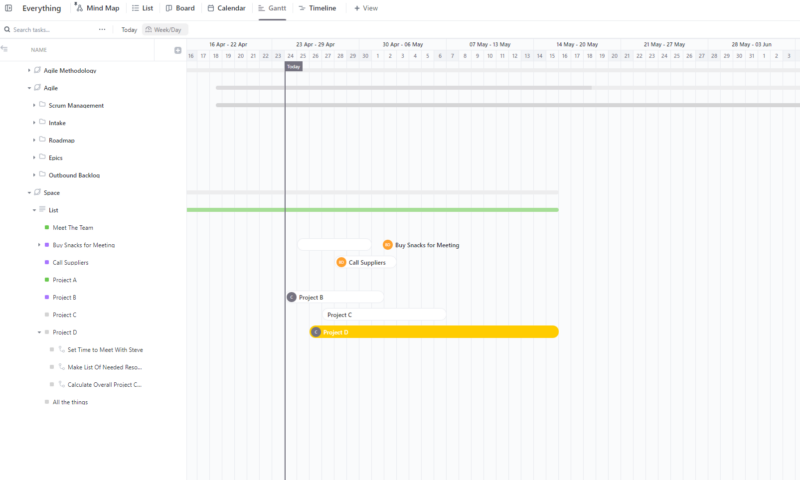
PRINCE2 to help plan and track project progress.
Though PRINCE2 is not as popular in the U.S. as other project management approaches like Waterfall or the Critical Path Method, organizations and government agencies globally use PRINCE2 for help with exploring project ideas, setting strict project specifications and justifying projects and budgets.
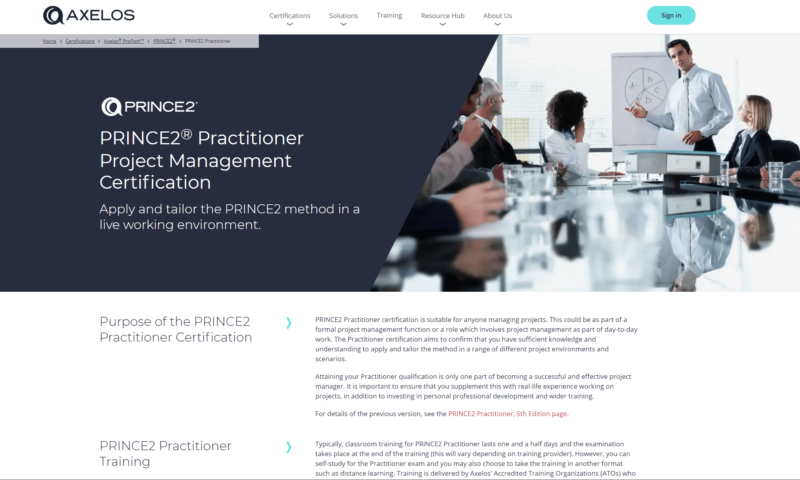
PRINCE2 Practitioner certification is $85,000.1
In our roundup of the best project management certifications, we listed PRINCE2 as a leading option. The average salary for project managers in the U.S. holding the PRINCE2 Practitioner certification is $85,000 per year.1
Who Is PRINCE2 For?
PRINCE2 is for organizations and government agencies that want to answer every project’s “who,” “what,” “where,” “why” and “how” questions. The PRINCE2 method has built-in measures that can help project managers gauge the viability of projects by helping them understand whether a project’s benefits are worth the projected cost and whether the project is too risky to take on.
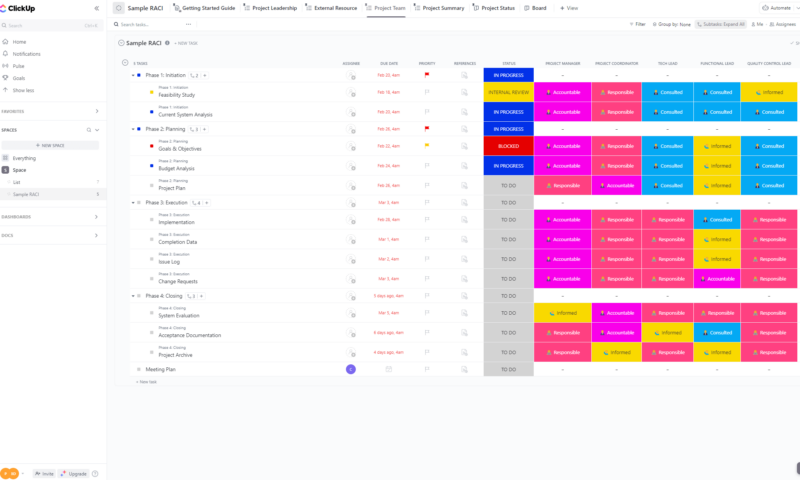
key project stakeholders and the project role they play.
PRINCE2, with its many principles and guidelines, is also ideal for those working on complex projects. Its structured nature helps an organization’s key managers efficiently track project stages and tasks, and quickly identify key project stakeholders via the use of responsible, accountable, consulted and informed charts, also known as RACI charts.
What Types of Projects Is PRINCE2 Used For?
The PRINCE2 method is used to manage projects that need to ensure budgets and timeframes are justified, when complex IT frameworks need to be installed, and during construction and oil and gas industry projects that need to ensure the proper utilization of resources. The banking industry also uses PRINCE2 to guarantee security-related project steps aren’t overlooked.
The PRINCE project management methodology was originally created for IT projects in 1989 but has since evolved into PRINCE2. The U.K. government and the National Health Service, highway agencies, the Canadian Mounted Police and technology companies like IBM, HP, Phillips and more are now using it.
Many industries use PRINCE2 because it ensures project managers follow a strict structure that minimizes risks, offers unparalleled levels of governance, proves or disproves business justification and helps keep scope creep in check. These factors can all contribute to a successful project.
What Is Agile?
Agile is a set of principles and guidelines that the Agile Alliance created to help software developers cast off the shackles and rigidity that traditional project management methodologies like Waterfall and the Critical Path Method placed on them. Agile methodologies such as Scrum and Kanban champion flexibility, communication and collaboration.
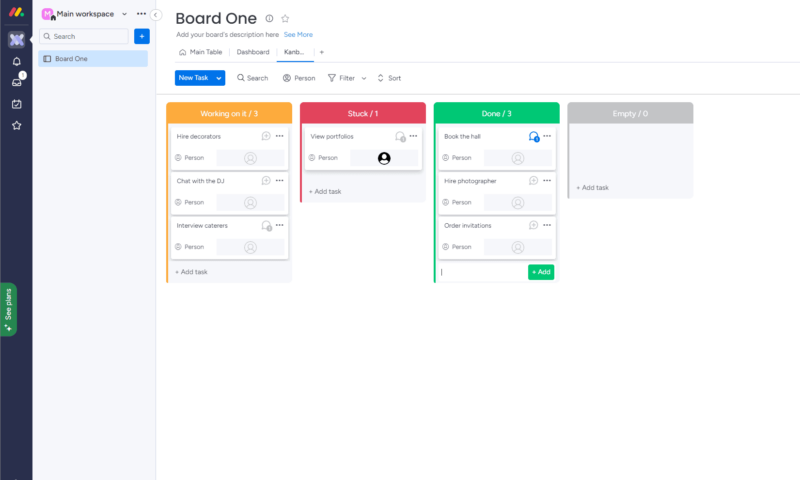
Agile principles can help project leaders react to a changing business environment. Agile projects feature a continuous and repetitive cycle of meetings for feedback, and work is broken down into short cycles (sprints) so product iterations can be launched quickly. This starkly contrasts PRINCE2, which is very rigid, features longer work periods and follows a set path.
Those interested in a career as an Agile project manager will be pleased to learn many Agile certifications are available. Two of the best certifications come from the Project Management Institute: the Project Management Professional (PMP), which covers traditional and Agile methods, and the Agile Certified Practitioner (PMI-ACP), which covers all aspects of Agile.
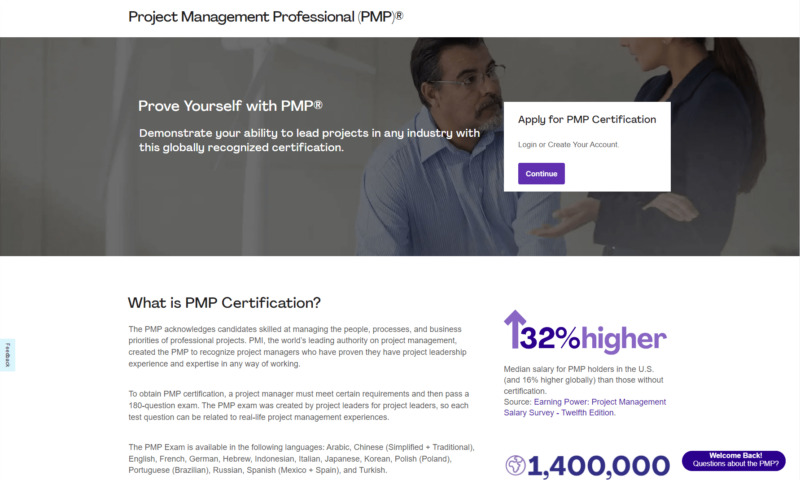
Both of these certifications are globally recognized and come from one of the most respected project management learning institutions (the PMI). With these certifications in hand, project managers in the U.S. can earn roughly $122,000 per year with the PMP2 and roughly $46,000 annually with the PMI-ACP.3
Who Is Agile For?
Though Agile methods and frameworks were originally designed for the software industry, many industries now use them to help plan, track and complete projects and instill a culture of continuous improvement. It’s not uncommon to find marketing, manufacturing and media production companies using frameworks like Scrum, Kanban and Scrumban.
Agile frameworks are also very versatile and can be used for everything from simple to complex projects. Thanks to methods like the scrum of scrums and the scaled Agile framework (SAFe), Agile methodologies can even be scaled across entire organizations. Agile’s ability to work in a changing project environment is why it’s becoming more popular.
What Types of Projects Is Agile Used For?
Because of its flexibility, Agile is often used in manufacturing and software engineering. It allows organizations to react quickly to emerging trends and customer demands. Publications use frameworks like Kanban to help them move articles through an editorial process, and human resource teams can efficiently track and move candidates through an onboarding process.
Agile guidelines were created to help software developers prioritize customer needs by removing strict timelines and opening communication pathways. They also facilitated delivering products incrementally. Though many Agile frameworks still focus on software development, numerous industries use Agile techniques when a controlled environment isn’t required.
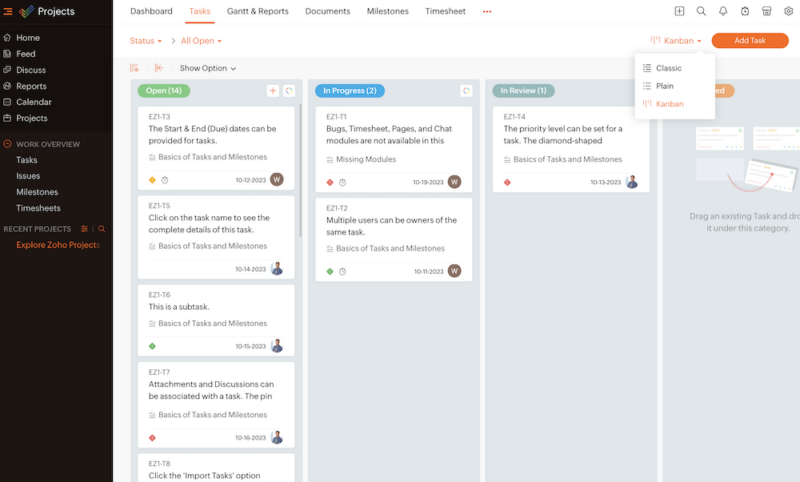
can benefit from Agile tools like the kanban board.
Agile’s reach continues to grow, with many industries, such as construction and healthcare, now adopting Agile philosophies to enhance the customer experience and increase the quality of deliverables. Any project that needs flexibility, open communication and enhanced collaboration with stakeholders and clients can benefit from using Agile frameworks.
PRINCE2 vs Agile Comparison: At A Glance
Agile and PRINCE2 are like chalk and cheese. PRINCE2 is incredibly structured and designed to account for every possible project outcome in advance. On the other hand, Agile, with its happy-go-lucky approach, allows teams to plan and adapt as the project progresses. We compare the two methods below.
| Understanding the method | An all-encompassing suite of project management tools for budgeting, risk management, portfolio management and tracking tasks and milestones. | A project management philosophy with many guidelines and principles that popular frameworks like Scrum, XP, DSDM and Kanban use to manage projects and meet customer expectations. |
| How the method works | A highly structured, strongly governed approach to project management that asks the “who,” “what,” “why,” “when,” “where” and “how” questions of every project. Once a project plan is made, it can be hard to change. | A flexible approach to work that lets cross-functional teams decide on the best course of action through the project’s life cycle. Plans are made but can quickly be changed to meet demands. |
| Communication standards | The structured methodology uses scores of documents to help teams communicate and plan. | An Agile environment favors frequent face-to-face conversations so feedback and customer requests can be handled quickly and efficiently. |
| Team, client & stakeholder collaboration | Few meetings occur between project leaders, clients and stakeholders, which makes receiving feedback and implementing change difficult. | Many meetings, such as sprint reviews, daily standups and sprint retrospectives, allow teams to meet frequently with each other and with clients and stakeholders to demo products, update plans and receive requests. |
| Types of tools used | Project management often takes place via Gantt charts that focus on a defined period of the project. | Agile projects typically use free-flowing kanban boards that give a global view of the projects. |
| Project teams | Team members have defined roles throughout the project and do not stray from assigned tasks. | Agile frameworks use cross-functional teams with individuals who can switch roles, share knowledge and collaborate. |
| Organizational structure | It uses a centralized organizational structure where upper management makes critical decisions. | It uses a decentralized organizational structure that allows all individuals to make decisions that can impact the project’s outcome. |
Key Differences Between PRINCE2 vs Agile
As the table above shows, there are some significant differences between PRINCE2 and Agile. In the following section, we’ll take a more in-depth look at the key differences between these two project management approaches.
PRINCE2 Is a Method, Agile Is a PhilosophyPRINCE2 is a project management methodology that can help project managers plan, track and manage projects, budgets, resources, portfolios and clients. On the other hand, Agile is a philosophy with principles and guidelines around which frameworks such as Scrum, Kanban, XP and DSDM are built.
One of the biggest differences between Agile and PRINCE2 is that Agile methods are highly flexible. This means that during a project, a manager or scrum master can course correct to account for changing markets, customer demands, resource constraints and budget updates.
PRINCE2, a traditional project management methodology, is the complete opposite of Agile in that once a plan is set in motion, it can be challenging to change aspects of the project. Essentially, the timeline is set in stone, the order in which tasks occur must be followed, budgets are hard to change and new customer demands can be hard to implement.
Continuing with the theme of structure, large PRINCE2 project teams are well defined. Every team member has a defined role and is responsible for specific tasks and objectives. Project roles are generally tracked via RACI charts so that everyone can see who does what. This approach can help make communication easier.
Agile teams usually consist of 10 or fewer people and are cross-functional. This means individuals are well versed in multiple disciplines and can quickly move between departments and tasks to help or to share knowledge with teammates. Cross-functional teams increase communication, and collaboration becomes much easier.
The whole point of the Agile philosophy is to move away from documentation and focus on frequent product launches (iterations) so customers can see how the product is progressing and provide feedback and recommendations. Frequent meetings and open communication lower the demand for documentation.
The PRINCE2 method is document-heavy and communication-light. Project managers spend a lot of time generating reports and other project documents that are sent to stakeholders and clients. These documents show key metrics and detailed recaps of project progress.
Organizations using the PRINCE2 method use centralized organizational structures, meaning all project decisions flow down from senior managers at the top of the structure. This approach allows managers to discuss decisions before implementing new plans, which can help keep projects in check but can also increase decision-making time.
The most popular Agile frameworks use decentralized organizational structures. A decentralized structure allows mid-level managers and development teams to make important decisions, which helps teams remain agile and efficiently respond to changing demands.
How to Choose the Right Certification For You
Many project management certifications are available for those who want to manage Agile and PRINCE2 projects. The list below looks at the most popular options.
- PRINCE2 Foundation: The PRINCE2 7 Foundation course and certification will prepare you for a PRINCE2 project management career. You’ll learn how to plan, manage and complete projects, manage people and embrace project data.
- PRINCE2 Practitioner: Holding the PRINCE2 7 Practitioner certification will show prospective employers that you have what it takes to run PRINCE2 projects. The certification will test your knowledge of communication, risk management, project planning, team leadership and more.
- Project Management Professional (PMP): Offered by the Project Management Institute, the PMP is considered the gold standard certification for project managers who want to prove their ability to lead traditional and Agile projects.
- PMI Agile Certified Practitioner (PMI-ACP): The Project Management Institute’s PMI-ACP certification will prove to the world that you have in-depth knowledge of Scrum, Lean, Kanban and Test-Driven Development frameworks, and that you can engage stakeholders and deliver customer value.
- Certified Scrum Project Owner (CSPO): If you like the idea of working with Scrum development teams and directly with stakeholders and clients, the Scrum Alliance’s CSPO certification could be for you. You’ll learn about Scrum fundamentals, product owner responsibilities, sprints, backlog management and more.
- Professional Scrum Product Owner (PSPO): Offered by Scrum.org, the PSPO covers many of the same topics as the CSPO certification. The main difference is that the PSPO requires you to pass an exam to obtain the certificate, whereas the CSPO only requires you to attend a class. Read our CSPO vs PSPO guide to learn more.
- Certified Scrum Master (CSM): Holding a CSM certification from the Scrum Alliance will show that you understand Scrum values and the framework and have knowledge of all Scrum events. Another highly regarded certification is Scrum.org’s Professional Scrum Master (PSM). You can learn more in our PSM vs CSM guide.
Before picking a project management certification, you’ll need to determine the career path you want to take (traditional or Agile) and what your salary requirements are. You’ll also need to determine how much time you have to dedicate to learning, and you’ll need to ensure that you meet any certification requirements before you apply.
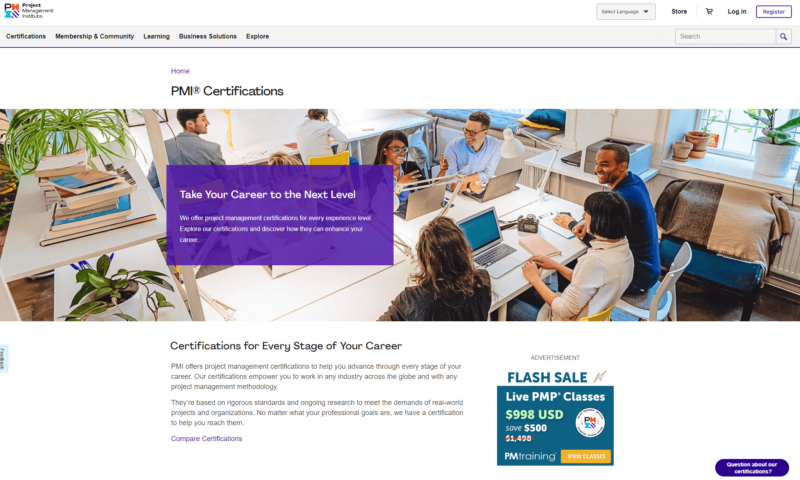
Agile and traditional project teams.
Applicants should also research the project management body to which they plan to give their money. You can do this by visiting their websites, reading about real-life experiences on social media sites like Reddit or Quora and reading formal reviews of the courses and certifications.
Final Thoughts
We hope this comparison of PRINCE2 and Agile has helped you understand the differences between these project management approaches. The most important detail to remember is that Agile is a philosophy that gave birth to many frameworks, such as Scrum and Test-Driven Development.
Though Agile was initially designed for software development, it is now used in everything from IT to healthcare, human resources and marketing. Agile frameworks favor communication and collaboration and allow teams to react to change.
PRINCE2 is a full methodology that helps project managers design, plan and manage very structured projects. The methodology is highly governed and asks every project “who,” “what,” “why,” “when,” “where” and “how” questions. It is suitable for large, complex projects in IT, construction, healthcare and more.
Have you used PRINCE2 or Agile frameworks to manage projects? Which approach do you like best? Are there other project management approaches you would like us to compare? Let us know in the comments. Thanks for reading.
FAQ: Agile vs PRINCE2
- What Is the Difference Between PRINCE2 and Agile?
The biggest difference between PRINCE2 and Agile is that PRINCE2 is a project management methodology. In contrast, Agile is a set of guidelines and principles on which project management frameworks like Scrum and Kanban are built.
- Is PRINCE2 Outdated?
No, PRINCE2 is not outdated. The methodology is constantly being updated to meet the demands of modern projects.
- Which Is Better, Scrum or PRINCE2?
Scrum and PRINCE2 are two completely different project management methodologies. Scrum is for small Agile teams working on flexible software projects. PRINCE2 is a rigid methodology for organizations working on projects in controlled environments.
- What Are the Disadvantages of PRINCE2?
The biggest disadvantages of the PRINCE2 method are that it favors documents over face-to-face communication, decision-making can be delayed due to using a centralized structure and it can be hard to change the course of the project, react to market changes or implement new customer requests once a project begins.
Sources:
- Zip Recruiter – PRINCE2 average salary (U.S)
- Zip Recruiter – PMP salary average salary (U.S)
- Zip Recruiter – PMI-ACP salary average (U.S)
The post PRINCE2 vs Agile Project Management: Key Differences Compared in 2024 appeared first on Cloudwards.
 1 week ago
122
1 week ago
122
